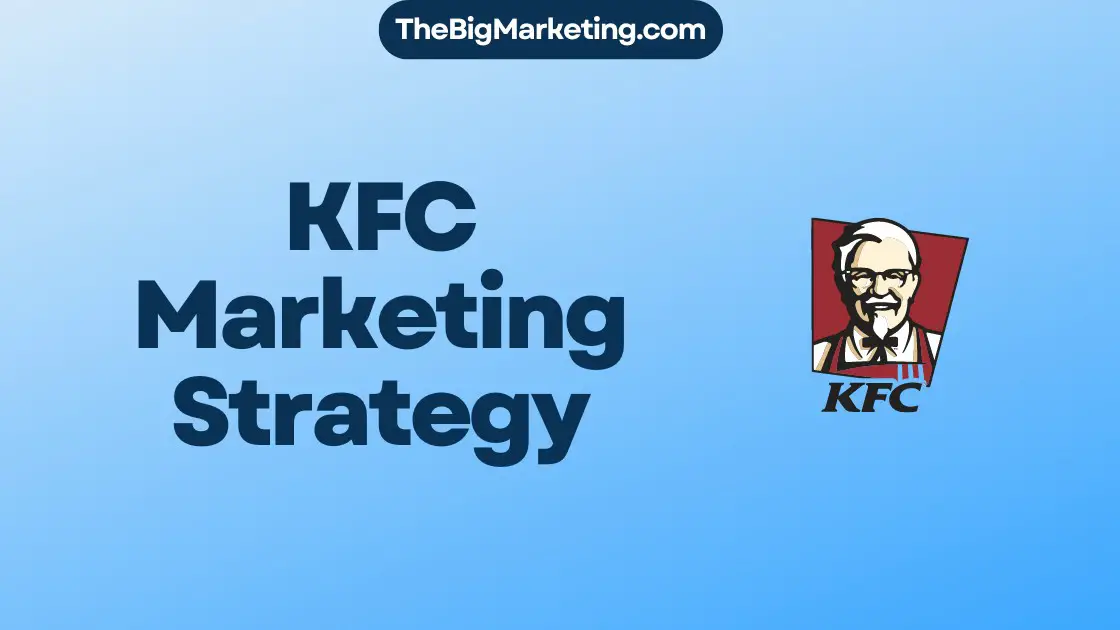Marketing Action Optimization is a crucial aspect of modern marketing strategies. It involves analyzing the performance of marketing campaigns and utilizing data-driven insights to maximize results and achieve a positive return on investment (ROI). By implementing optimization techniques, businesses can improve their marketing strategies, increase customer engagement, and drive overall campaign success.
In today’s digital marketing landscape, marketing optimization has become more important than ever. With the availability of advanced digital marketing techniques and optimization tools, businesses can collect and analyze data from various channels to gain valuable insights. This data-driven approach allows businesses to make informed decisions, optimize marketing actions, and ultimately, enhance customer experiences.
Marketing optimization involves a continuous process of data collection, analysis, and action. By measuring and tracking marketing campaign performance, businesses can identify which strategies are generating positive results and adjust accordingly. This iterative process ensures that businesses are consistently improving their marketing efforts and achieving better outcomes.
In this guide, we will explore the importance of marketing optimization, how to get started with optimization practices, the challenges businesses may face, and the tools available to facilitate optimization. We will also discuss the measurement of success in marketing optimization and its impact on overall marketing strategies.
Key Takeaways:
– Marketing Action Optimization involves analyzing the performance of marketing campaigns to maximize results and achieve a positive ROI.
– Data-driven insights are crucial for making informed decisions and optimizing marketing actions.
– Marketing optimization requires a continuous process of data collection, analysis, and action.
– Businesses can face challenges such as data fragmentation and varying success definitions in the optimization process.
– Tools and technologies, such as data aggregation and predictive analytics, can help overcome these challenges and streamline the optimization process.
The Importance of Marketing Optimization
Marketing optimization plays a crucial role in the success of businesses investing significant amounts of money into their marketing campaigns. The main objective is to ensure efficient spending, positive ROI, and increased conversion rates, leading to overall marketing campaign success.
By optimizing marketing campaigns, businesses can identify which strategies are generating customers and revenue, allowing them to allocate resources effectively. This process involves analyzing campaign data, making necessary adjustments, and continuously improving performance.
Effective marketing optimization enables businesses to make the most out of their marketing budgets. Instead of blindly spending money on various strategies, optimization allows for efficient spending by focusing resources on campaigns that deliver positive results. By eliminating or adjusting underperforming campaigns, businesses can allocate their budgets to initiatives that generate higher returns.
Conversion rates play a crucial role in marketing optimization. By analyzing and understanding conversion rates, businesses can refine their campaigns to increase customer engagement and drive desired actions. Optimization aims to improve these conversion rates by tailoring marketing efforts to capture the attention and interest of the target audience, resulting in higher conversion rates and improved campaign success.
Ultimately, marketing optimization leads to increased success and improved engagement with customers. By continuously analyzing and optimizing campaigns, businesses can adapt to changing market dynamics, stay ahead of competitors, and effectively connect with their target audience. Marketing optimization is a critical component of any successful marketing strategy, providing businesses with the tools and insights needed to thrive in the digital landscape.
| Benefits of Marketing Optimization | Key Takeaways |
|---|---|
| Efficient spending of marketing budgets | – Marketing optimization ensures that resources are allocated to strategies that deliver positive ROI. – By eliminating underperforming campaigns, businesses can save money and redirect it towards initiatives that generate higher returns. |
| Increased conversion rates | – Optimization helps refine campaigns to capture the attention and interest of the target audience, resulting in higher conversion rates. – Improved conversion rates lead to increased customer engagement and better campaign success. |
| Improved campaign success | – By continuously analyzing and optimizing campaigns, businesses can adapt to changing market dynamics and stay ahead of competitors. – Marketing optimization enables businesses to effectively connect with their target audience, leading to improved engagement and overall success. |
Getting Started with Marketing Optimization
To effectively optimize your marketing efforts, it’s crucial to begin with a strong foundation of data collection and analysis. Collecting relevant data from your marketing campaigns allows you to gain insights into customer behavior, campaign performance, and conversion rates. Armed with this information, you can make data-driven decisions to improve your marketing strategy and achieve better results.
Start by identifying the key data points you need to collect, such as customer demographics, engagement metrics, and campaign-specific KPIs. Utilize tools and platforms that provide comprehensive data tracking and reporting capabilities, making it easier to collect and organize the necessary information.
Once the data is collected, the next step is to analyze it to uncover valuable insights. Look for patterns, trends, and correlations that can help you understand what is working and what needs improvement. By leveraging data analysis techniques, such as statistical modeling and segmentation, you can identify areas of opportunity and potential challenges within your marketing campaigns.
Based on the insights gained from your data analysis, it’s time to take action. Implement optimizations and adjustments to your marketing campaigns that align with the identified opportunities. This could include refining targeting strategies, optimizing ad creative, or adjusting messaging to better resonate with your target audience. Taking action based on data-driven insights ensures that your marketing efforts are continuously improving and evolving.
Marketing optimization is not a one-time task—it requires ongoing practice. Regularly review and analyze your marketing data to monitor performance and track the impact of your optimizations. Establish a cadence for optimization efforts, whether it’s daily, weekly, or monthly, to ensure that your marketing strategy remains adaptable and responsive to changing market conditions.
Remember, marketing optimization is an iterative process that requires continuous refinement. By collecting and analyzing data, taking action based on insights, and practicing ongoing optimization, you can unlock the full potential of your marketing campaigns and drive better results.
| Benefits of Getting Started with Marketing Optimization |
|---|
| Enhanced customer targeting and segmentation |
| Improved campaign performance and conversion rates |
| Maximized ROI and cost-effectiveness |
| Increased customer engagement and satisfaction |
Understanding Marketing Optimization
Marketing optimization is a data-driven approach that leverages insights from collected data to improve marketing campaigns and achieve a positive return on investment (ROI). By accessing comprehensive and granular data from all marketing channels and campaigns, businesses can make informed decisions and optimize their marketing efforts for better results. To facilitate the optimization process, there are various tools and technologies available that enable businesses to visualize and analyze their data, identify patterns and trends, and make data-driven optimizations.
Marketing optimization focuses on utilizing data to drive marketing strategies and make informed decisions. By leveraging data-driven insights, businesses can gain a deeper understanding of their target audience’s preferences, behaviors, and needs. These insights enable marketers to tailor their campaigns to resonate with their audience, improving the effectiveness of their marketing actions. By aligning marketing efforts with consumer insights, businesses can achieve higher conversion rates, increased customer engagement, and ultimately, a positive ROI.
To effectively carry out marketing optimization, businesses need access to comprehensive data sets that cover all marketing channels, including digital advertising platforms, social media, email marketing, and website analytics. By integrating data from these various sources, businesses can compile a holistic view of their marketing performance and identify areas for optimization.
Data-Driven Decision Making
Data-driven decision making lies at the core of marketing optimization. It involves analyzing data to uncover valuable insights and trends that can be used to enhance marketing strategies. These insights can help marketers understand which marketing actions are yielding the best results and which ones require optimization. By making data-driven decisions, businesses can allocate resources effectively, optimize budget allocation, and refine their marketing tactics to achieve maximum impact.
One of the key benefits of data-driven decision making is the ability to continuously refine and improve marketing efforts. By closely monitoring campaign performance and analyzing customer behavioral data, businesses can identify areas where optimization is necessary. This might involve making adjustments to ad creatives, refining targeting parameters, or modifying messaging to better resonate with the target audience.
Optimization Tools
To facilitate marketing optimization, there are a variety of optimization tools and technologies available. These tools enable businesses to collect, analyze, and visualize their marketing data, making it easier to identify insights and make informed optimization decisions.
| Optimization Tool | Key Features |
|---|---|
| Marketing Analytics Platforms | Comprehensive data aggregation, cross-channel insights, performance tracking |
| Predictive Modeling Software | Data-driven forecasting, customer segmentation, campaign optimization |
| Campaign Management Systems | Automation, campaign tracking, campaign performance analysis |
| Attribution Tools | Multi-touch attribution, tracking customer journey, ROI analysis |
These optimization tools allow marketers to gain a comprehensive view of their marketing performance, identify trends and patterns, and make data-driven optimizations. By leveraging these tools, businesses can streamline their optimization process and achieve better results from their marketing campaigns.
Marketing optimization is an iterative process that requires continuous data analysis, decision making, and optimization actions. By harnessing the power of data and utilizing optimization tools, businesses can enhance their marketing strategies, improve ROI, and achieve their business objectives.
Multi-Channel Marketing Optimization
In today’s digital landscape, businesses must engage with customers through multiple channels to effectively reach and connect with them throughout their customer journey. This approach, known as multi-channel marketing, allows businesses to leverage different platforms and touchpoints to create meaningful interactions with their target audience.
One of the challenges of multi-channel marketing is tracking and measuring the success of each channel and attributing the marketing response correctly. With customers interacting with brands across various channels, it can be difficult to determine which touchpoints contributed to conversions or sales. This is where marketing response attribution comes into play – the process of assigning credit to each channel based on its impact on customer behavior.
Understanding the Customer Journey
To optimize multi-channel marketing, businesses need to have a comprehensive understanding of the customer journey. This involves mapping out the various touchpoints and interactions that a customer goes through before making a purchase decision. By analyzing the customer journey, businesses can identify the most influential channels and optimize their marketing efforts accordingly.
Consistency in messaging across channels is another critical aspect of multi-channel marketing optimization. To build a strong brand and create a seamless customer experience, businesses must ensure that their messaging remains consistent across all channels. This consistency helps reinforce brand identity and ensures that customers receive a cohesive message regardless of the channel they engage with.
The Role of Data in Multi-Channel Marketing Optimization
Data plays a crucial role in multi-channel marketing optimization. By aggregating and analyzing data from various channels, businesses can gain valuable insights into customer behavior and campaign performance. This data-driven approach allows businesses to make informed decisions and optimize their marketing strategies for maximum effectiveness.
Additionally, leveraging data analytics and attribution models can help businesses identify the most effective marketing channels and allocate their resources accordingly. By understanding the impact of each channel on the customer journey, businesses can optimize their marketing mix and achieve better results.
The image above visually represents the interconnectedness of different marketing channels and the need for optimization to ensure a seamless customer experience.
Overall, multi-channel marketing optimization requires a combination of data analysis, customer journey mapping, and consistent messaging. By leveraging the right tools and strategies, businesses can gain a comprehensive understanding of their marketing performance and deliver a cohesive brand experience across all channels.
Challenges of Marketing Optimization
Marketing optimization encounters various challenges that hinder its effectiveness. These challenges include data fragmentation, metrics measurement, and defining success in marketing campaigns. Data is often fragmented and dispersed across different analytics tools, making it difficult to obtain a comprehensive view of marketing performance. This data siloing exacerbates the complexities of analysis and optimization.
Furthermore, the measurement of metrics varies across platforms and organizations, impeding the process of optimization. Different platforms may have different metrics and success definitions, making it challenging to compare and evaluate marketing efforts effectively. Additionally, continuous changes and updates in platform measurement practices add to the complexity of marketing optimization.
To overcome these challenges, marketers need to employ strategies and technologies that streamline data collection, aggregation, and measurement. Implementing unified data management systems and employing standardized metrics can help consolidate fragmented data and ensure consistency in performance measurement. By addressing these challenges head-on, businesses can enhance their marketing optimization efforts and achieve better results.
| Challenges | Impact |
|---|---|
| Data Fragmentation | Makes it difficult to gain a comprehensive view of marketing performance |
| Metrics Measurement | Varying metrics across platforms and organizations hinder effective optimization |
| Success Definition | Differences in success definitions complicate the evaluation of marketing efforts |
Solutions for Marketing Optimization
To overcome the challenges of marketing optimization, businesses can employ various solutions that leverage data, analytics, and performance metrics. These solutions enable businesses to make informed decisions, streamline their optimization process, and enhance their overall marketing campaign effectiveness.
Aggregate Data for Comprehensive Insights
A key solution for marketing optimization is the aggregation of data from various channels. By consolidating data from different sources, businesses can gain a comprehensive view of their marketing performance. This allows for a holistic analysis of marketing campaigns, enabling businesses to identify trends, patterns, and areas for improvement. Aggregated data serves as the foundation for data-driven decision making and optimization.
Utilize Predictive Analytics to Uncover Trends
Predictive analytics is another powerful solution for marketing optimization. By using advanced analytical techniques, businesses can identify hidden trends and patterns within their data. Predictive analytics allows for the projection of future outcomes based on historical data and behavior. This enables businesses to anticipate customer needs, make proactive adjustments to their marketing strategies, and optimize their campaigns accordingly.
Customize Performance Metrics for Specific Goals
Effective marketing optimization requires the measurement of performance metrics tailored to specific goals and objectives. By customizing performance metrics, businesses can track the success and impact of their marketing actions accurately. Whether it’s measuring conversion rates, click-through rates, or return on investment (ROI), customized performance metrics provide valuable insights into the effectiveness of marketing campaigns. These insights guide optimization efforts, ensuring marketing actions are aligned with desired outcomes.
To illustrate these solutions in action, consider the following table:
| Marketing Optimization Solution | Description |
|---|---|
| Aggregate Data | Consolidate data from various channels to gain a comprehensive view of marketing performance and identify areas for improvement. |
| Predictive Analytics | Utilize advanced analytics techniques to uncover trends, patterns, and future outcomes based on historical data and customer behavior. |
| Customized Performance Metrics | Create and customize performance metrics aligned with specific goals and objectives to accurately measure the success of marketing actions. |
Measuring Success in Marketing Optimization
Measuring the success of marketing optimization involves evaluating the return on investment (ROI) for each marketing channel. By analyzing the performance of different channels, businesses can identify which ones are driving positive results and which ones require further optimization or pause. Determining the ROI by channel allows marketers to make informed decisions and allocate resources effectively.
Visualization of performance data plays a crucial role in understanding the impact of marketing actions. With visual representations such as charts, graphs, and dashboards, marketers can easily interpret the data and gain valuable insights. Performance visualization enables them to identify patterns, trends, and areas of improvement, ultimately leading to data-driven decisions.
To effectively measure success and optimize marketing strategies, businesses can utilize tools and dashboards that provide a granular view of data. These tools allow marketers to track individual campaign performance as well as overall marketing performance. By toggling between different levels of analysis, marketers can gain a comprehensive understanding of how their actions contribute to overall success and make necessary adjustments.
Benefits of Measuring Marketing Success
- Identify high-performing marketing channels
- Allocate resources effectively
- Optimize underperforming marketing channels
- Make data-driven decisions
- Improve overall marketing strategies
Measuring marketing success through ROI analysis and performance visualization provides valuable insights and actionable data for optimizing strategies. By leveraging these measurement techniques, businesses can maximize the impact of their marketing efforts and achieve better results.
The Road to Marketing Optimization
The road to marketing optimization involves a systematic process that includes data collection, behavioral analysis, and understanding customer lifetime value. To optimize marketing efforts, businesses must gather relevant data from various channels and campaigns to gain insights into customer behavior and preferences. This data collection allows businesses to understand their target audience better and tailor marketing strategies accordingly.
Once the data is collected, it is crucial to perform thorough behavioral analysis to identify patterns and trends. Analyzing customer behavior helps businesses understand what drives engagement and conversions. By leveraging these insights, businesses can make informed decisions and optimize their marketing actions to maximize results.
In addition to data collection and behavioral analysis, understanding customer lifetime value is essential. Customer lifetime value (CLV) is the predicted net profit generated by a customer throughout their entire relationship with a business. By determining the CLV, businesses can identify their most valuable customers and allocate resources accordingly. Optimizing marketing actions based on CLV helps drive long-term revenue generation and customer retention.
Overall, the road to marketing optimization requires a data-driven and customer-centric approach. By collecting relevant data, conducting behavioral analysis, and understanding customer lifetime value, businesses can optimize their marketing efforts to achieve better results and improve overall success.
Implementing Marketing Action Optimization
Marketing action optimization is a methodology that focuses on running the most effective marketing actions for each customer or target group. It involves predictive customer behavior modeling, micro-segmentation, and data analysis to determine the most successful marketing actions.
By dividing customers into test and control groups and analyzing the results of marketing actions for each micro-segment, businesses can optimize their marketing strategies. Implementing marketing action optimization requires an integrated set of technologies and tools that combine segmentation, modeling, and campaign management capabilities.
Benefits of Implementing Marketing Action Optimization
- Enhanced targeting: Predictive customer behavior modeling allows businesses to identify the most relevant marketing actions for each customer segment, resulting in improved targeting and personalization.
- Improved campaign performance: Micro-segmentation enables businesses to fine-tune their marketing actions based on specific customer groups, leading to higher engagement and conversion rates.
- Data-driven decision-making: Through data analysis, businesses can uncover valuable insights and trends, enabling them to make informed decisions when optimizing their marketing actions.
| Components of Marketing Action Optimization | Description |
|---|---|
| Predictive customer behavior modeling | Utilizing advanced analytics techniques to predict future customer behavior and identify the most effective marketing actions for each individual or segment. |
| Micro-segmentation | Dividing customers into smaller, more targeted segments based on specific characteristics or behaviors, allowing for personalized marketing actions. |
| Data analysis | Examining and interpreting data to uncover patterns, trends, and insights that can guide the optimization of marketing actions. |
Implementing marketing action optimization empowers businesses to run highly targeted and personalized marketing campaigns, resulting in improved customer engagement and conversion rates. It enhances decision-making through data-driven insights, providing a competitive edge in today’s dynamic marketing landscape.
Tools for Marketing Optimization
When it comes to marketing optimization, having the right tools can make all the difference. These tools are designed to streamline the optimization process, improve efficiency, and help businesses achieve better results. Let’s take a closer look at the essential tools that can enhance your marketing efforts.
Data Aggregation
Data aggregation tools play a crucial role in marketing optimization. They enable businesses to gather data from multiple channels and sources, providing a comprehensive view of their marketing performance. By aggregating data, businesses can identify patterns, trends, and insights that can inform their optimization strategies.
Predictive Modeling
Predictive modeling tools utilize advanced algorithms and machine learning techniques to analyze historical data and predict future outcomes. These tools help businesses understand customer behavior, preferences, and buying patterns. By leveraging predictive modeling, businesses can make data-driven decisions and optimize their marketing actions for better results.
Campaign Management
Effective campaign management is key to marketing optimization. Campaign management tools allow businesses to plan, execute, track, and analyze their marketing campaigns in one centralized platform. These tools provide insights into campaign performance, allowing businesses to make real-time adjustments and optimizations to maximize their success.
By utilizing marketing optimization tools such as data aggregation, predictive modeling, and campaign management, businesses can easily collect and analyze data, gain valuable insights, and make data-driven optimizations. Choosing the right tools for your marketing optimization efforts is crucial for maximizing the effectiveness of your marketing actions and achieving better results.
Conclusion
Marketing optimization is an essential aspect of modern marketing strategies. It is a continuous process that requires ongoing data collection, analysis, and action. By continuously improving marketing strategies and making data-driven decisions, businesses can adapt to changing market dynamics and maximize the effectiveness of their marketing campaigns.
With marketing optimization, businesses can leverage the power of data to increase customer engagement and achieve better results. By regularly optimizing marketing actions based on insights gained from data analysis, businesses can improve the overall performance of their marketing efforts. This continuous improvement approach ensures that businesses stay ahead in the competitive digital landscape.
Data-driven decision making is at the core of marketing optimization. By using data to guide marketing strategies, businesses can make informed decisions and optimize their campaigns for success. Through data-driven decision making, businesses can identify patterns, trends, and customer preferences, allowing them to tailor their marketing actions to effectively reach and engage their target audience.
In conclusion, marketing optimization is an indispensable practice for businesses seeking success in the digital marketing landscape. By continuously improving marketing strategies, making data-driven decisions, and adapting to market changes, businesses can achieve better results, increase customer engagement, and stay ahead of the competition. Embracing marketing optimization is crucial for businesses aiming to maximize their marketing ROI and thrive in today’s data-driven world.






